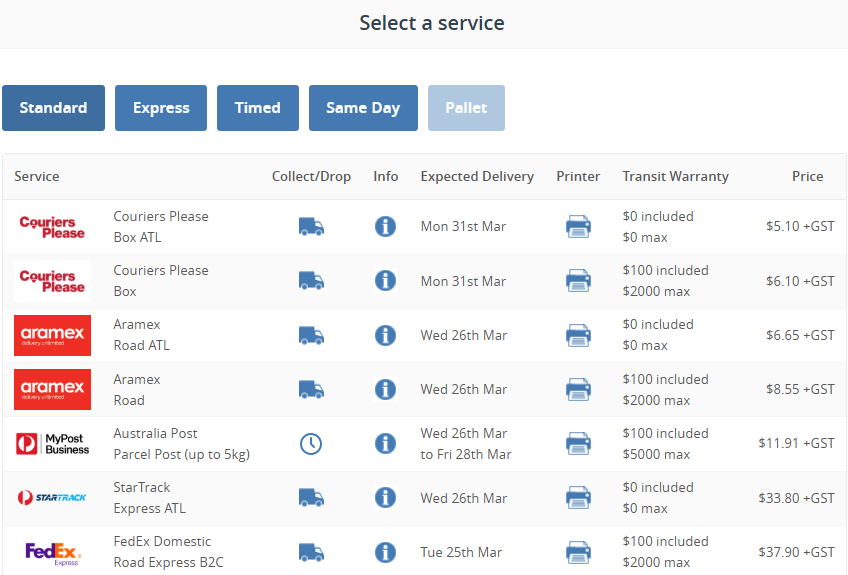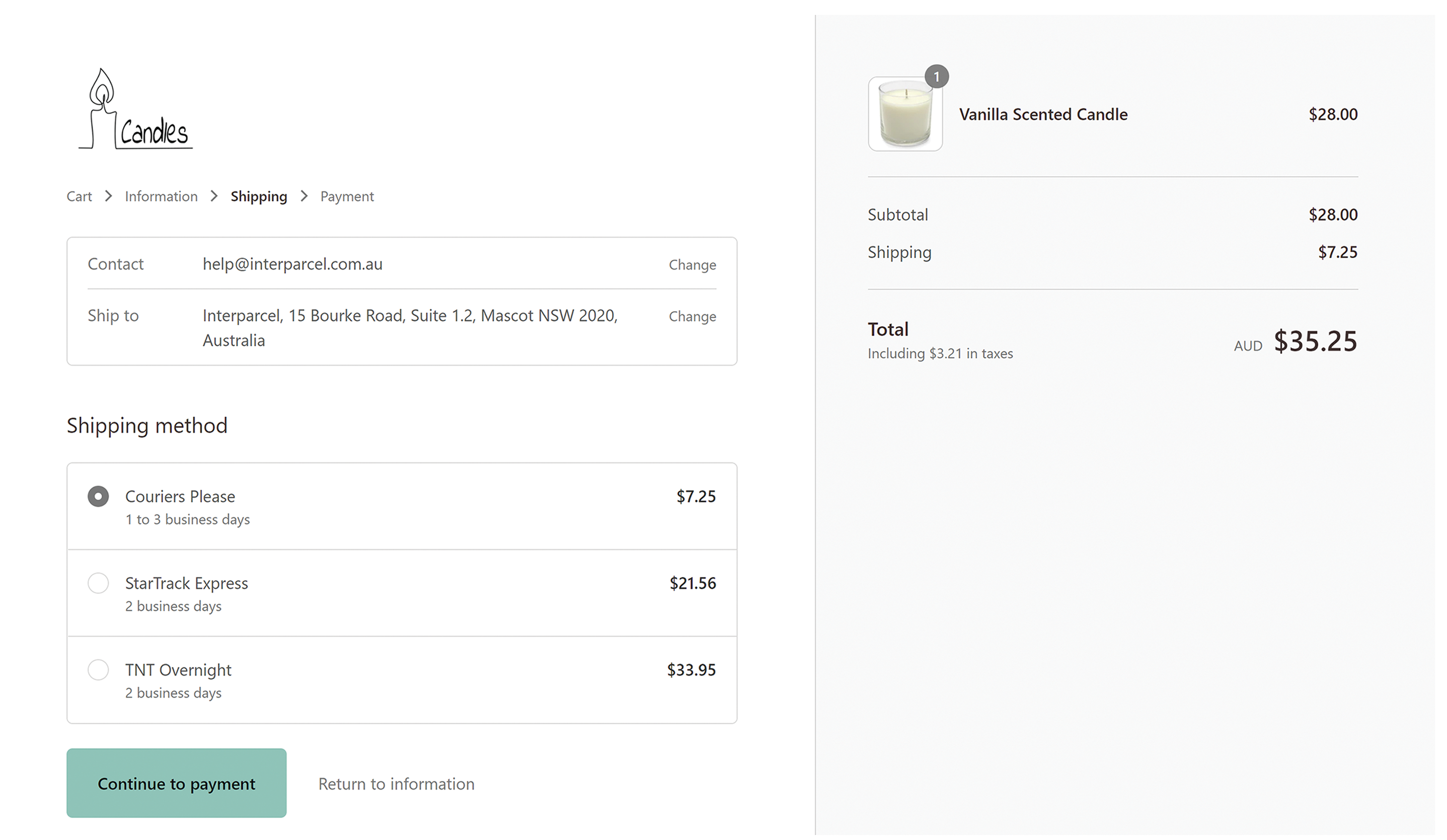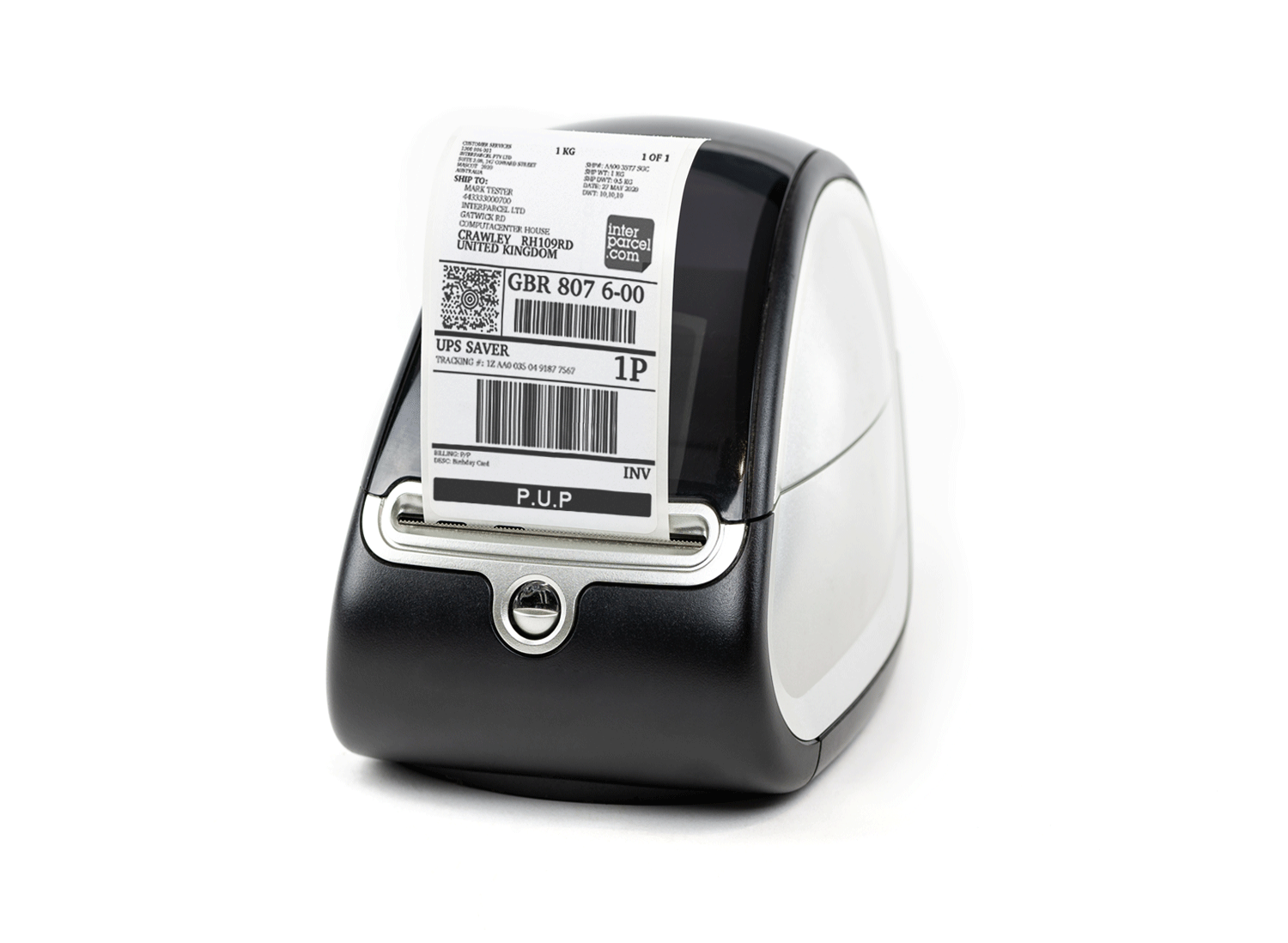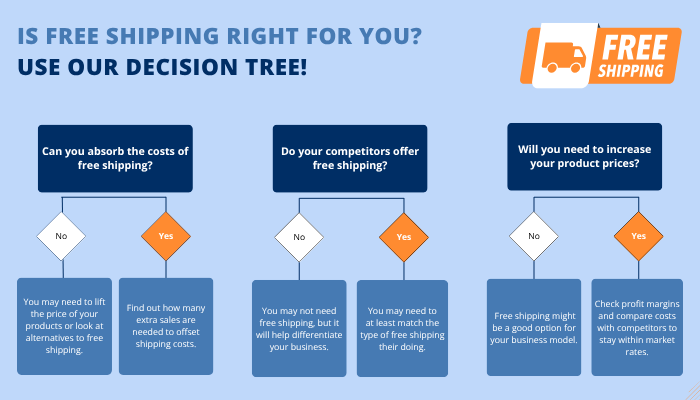Shipping isn’t just part of your business. It is your business.
You can have the flashiest website, the best product, the most irresistible offers, but if your shipping’s a mess? You're sacrificing trust, money, and repeat customers.
And let’s be real… It’s more complicated than ever.
Do you offer free shipping or charge by weight? Which couriers should you trust? Are you overpaying and under-delivering? Should you be panicking about international surcharges?
If you’ve ever stared at a checkout settings page or juggled courier tabs wondering if you’re doing it all wrong, you’re not alone.
It feels like every week there’s a new tool, a new fee, a new rule. And you’re supposed to magically keep up while running your entire store.
That’s exhausting.
So this guide is your shortcut. We’ll break down the chaos, from choosing your shipping strategy to automating fulfilment and dealing with returns, so you can stop guessing and start shipping smarter in 2025.
Let’s dive in.
What Is a Shipping Strategy?
A shipping strategy is your game plan for how you’ll get orders to your customers.
But in 2025, shipping isn’t just about logistics. It’s the bridge between the sale and customer satisfaction. A strong strategy means faster delivery, fewer support tickets, lower costs, and happier customers who come back again.
The stakes are high.
Around 85% of shoppers say a poor delivery experience would stop them from buying from a retailer again. That’s how powerful shipping is.
So what does a good strategy look like in 2025?
It's not just picking a courier and calling it a day. It's combining technology, automation, and customer-first thinking. It means real-time tracking, flexible delivery options, and rates that don’t destroy your margins.
5 Main Steps To Nailing Your Shipping Strategy
1. Packaging & Measuring Parcels Without Damage and Delays
2. Choose the Right Courier for Your Product Type
3. Automate Your Fulfilment Workflows
4. Print Your Shipping Label the Right Way
5. Prioritise Customer Support
Packaging & Measuring Parcels Without Damage and Delays
How you package your parcels doesn’t just affect how things look, it impacts shipping costs, delivery speed, and the likelihood of damaged goods. Even the most reliable courier can’t protect an item that wasn’t packed properly.
Select the Right Packaging and Pack It Properly
Start with a strong outer box. For anything fragile, heavy, or valuable, double-corrugated cardboard offers better durability during handling and stacking. It can absorb more impact and is less likely to collapse under pressure.

Always leave 3-5 cm of space around the item and fill it with cushioning material (like hex wrap, shredded cardboard, or paper void fill). These not only protect your product during transit but are also more sustainable materials than traditional plastic fillers.
Avoid satchels for fragile, sharp-edged, or oddly shaped items. They’re better suited for lightweight, flexible items like apparel. For anything else, a box is your safest bet.
If you use branded packaging as part of your customer experience strategy, make sure it still meets durability and sizing standards. Stylish doesn’t matter if it doesn’t hold up in transit.
Measure Your Parcels Accurately
Measuring accurately isn’t just about fitting your products in the right box, it directly affects how much you’ll pay in shipping fees.
Couriers use cubic weight (also called volumetric weight) to calculate costs, especially when your parcel is large but lightweight. If your package takes up more space than it weighs, you’ll be charged based on its size, not its scale weight.
To avoid surprises:
- Always measure your parcel after it’s packed and sealed, including bulges, padding, or anything that adds to the size.
- Use a tape measure and scale, and round up to the nearest whole centimetre and kilogram.
- Then calculate the dimensional weight:
- For domestic shipping: (L × W × H) ÷ 4000
- For international air: (L × W × H) ÷ 5000

Couriers will charge whichever is higher, whether it's the actual weight or the dimensional weight. That’s why accuracy matters. Get it wrong, and you could be overcharged or hit with unexpected surcharges.
Avoid Common Packing Mistakes That Cost You
Some common packaging mistakes we frequently see from customers using the Interparcel platform include:
- Overpacking causes pressure points that can tear the box or cause it to burst open.
- Underpacking leaves items free to move, increasing the risk of breakage.
- Using the wrong box size can inflate your shipping costs due to cubic weight pricing, even if the parcel is light.
- Sending prohibited or restricted items can result in parcel rejection, delays, or fines. Each courier has its own list of items that can't be shipped, such as aerosols, batteries, or perishables. Always double-check restrictions before booking to stay compliant and avoid costly mistakes.
Packaging isn’t just about protection, it’s a cost-saving strategy. When done right, it reduces damage, speeds up fulfilment, and avoids courier surcharges.
Choose the Right Courier for Your Product Type
Not all couriers are created equal. The one that’s best for a 2kg parcel to Sydney isn’t necessarily the best for a 10kg box going to Perth.
To keep your shipping reliable and cost-effective, it’s important to match the right courier to the product and destination. Some specialise in metro deliveries with tight timeframes. Others offer better rates for heavy, regional, or international parcels.
Most private couriers will also pick up parcels directly from your address, offering added convenience for busy businesses.
Here’s how to pick the right courier for the job:
- Consider parcel size and weight: Lighter parcels often cost less with couriers like Aramex, while larger shipments (25 kg+) may be more economical with providers like TNT or CRL Express.
- Match speed to customer expectations: If your customers expect next-day delivery, you’ll need to prioritise express services. For non-urgent orders, standard services can keep costs down.
- Check destination coverage: Not all couriers have equal strength in every region. Some perform better in metro areas; others specialise in rural or international deliveries.
- Use data to compare performance: Track delivery times, customer complaints, and missed scans. Over time, you’ll get a clear picture of which couriers deliver the best value for each scenario.
Multi-carrier platforms Interparcel make it easier to compare and switch couriers on the fly, so you're never locked into one option when delays, price hikes, or route issues crop up.
Most private couriers will pick up parcels directly from your address, offering added convenience for busy businesses.
Automate Your Fulfilment Workflows
Order fulfilment is one of the most important parts of the shipping process to streamline. Many ecommerce businesses still upload orders manually from their store to their courier system, which takes up valuable time and increases the risk of mistakes.
The most effective way to improve this is to start implementing shipping technology that automates key steps.
Multi-Carrier Shipping Platform
One of the most impactful improvements is connecting your ecommerce store to a multi-carrier shipping platform.

This integration allows all orders to be automatically imported into a single platform, so you don’t need to copy and paste all the order information from your ecommerce store to each courier website.
Integrate with Australia Post
If you’re using Australia Post as part of your delivery strategy, integrating it into a multicarrier platform can significantly improve your fulfilment efficiency. Instead of managing Australia Post orders separately, integration allows you to handle those shipments from the same dashboard as your other couriers. This means no more toggling between systems or manually entering order details.
Platforms like Interparcel support connections with both MyPost Business and Parcel Contract (eParcel), making it easier to centralise your shipping, track parcels in one place, and reduce admin time.
Rule Manager
Once you have orders in your multi-carrier system, couriers still need to be selected for each order. You can select a different courier depending on speed, price, or type. But there are tools to automate courier selection and speed up this process.
For example, Interparcel’s Rule Manager allows you to set specific rules that automatically assign couriers based on criteria like parcel weight or destination. A rule might automatically assign Aramex to all orders under 5kg.

Live Shipping Rates at Checkout
Another way to automate courier selection during fulfilment is by activating live shipping rates at checkout.
This means your customers get to choose from a range of courier options at checkout, which will include the real time rates of each courier based on size, speed, and the destination.

It also helps reduce cart abandonment by empowering your customers with choice at checkout, meaning they can choose both express and standard options, depending on their preferences.
When a courier is selected by the customer at checkout, this information is automatically updated onto your shipping platform, which means you wont need to spend time assigning a courier during fulfilment.
By removing more manual stpe throughout the fulfilment process, you speed up the rate of fulfilling orders, which becomes especially important as your number of orders starts ti soar.
Smart Boxing
Beyond couriers and rates, packaging efficiency is another area ripe for automation. If you’re sending multi-item orders, Smart Boxing tools analyse your product dimensions and recommend the most efficient way to group them into boxes. This helps you use fewer parcels, avoid oversized packaging, and reduce shipping costs tied to dimensional weight.
Print Manager
Finally, fulfilment speed depends heavily on how efficiently you can produce shipping labels and packing slips. A print manager lets you batch-print documents for multiple orders at once and store your printer preferences. Instead of printing one label at a time, you can process dozens in minutes, keeping up with high order volumes without adding staff.
Print Your Shipping Label the Right Way
Once your parcel is packed and sealed, the next step is printing a shipping label that’s clear, accurate, and properly applied.
A poorly printed or misaligned label can lead to failed deliveries, delays, or surcharges, so it’s worth doing right the first time.
Your shipping label includes essential details like the destination address, sender info, tracking barcode, and courier service. If anything is incorrect or unreadable, your parcel could be returned or rerouted.
Here’s how to ensure your label works as it should:
- Double-check the address for typos and make sure it matches the shipping details provided by the customer.
- Include contact info where required (some couriers mandate phone numbers or email addresses).
- Match each label to the correct courier and the specific parcel it belongs to. Don’t mix up labels between different couriers, services, or boxes within the same order.
How to Place Your Label
Label placement might seem like a small detail, but it’s a critical one. Poor placement can stop a parcel from being scanned or cause it to be misrouted.
- Stick the label on the top flat surface of the parcel, not over seams, corners, or edges.
- Ensure it’s fully visible and firmly stuck down. Avoid any peeling or wrinkles.
- If you’re reusing a box, remove any old labels or barcodes that could confuse scanning systems.
Batch Printing for Efficiency
If you’re handling more than a handful of parcels per day, printing labels one by one can take up valuable time. Batch printing helps streamline the process and cut down on repetitive work.
With a multicarrier platform like Interparcel, you can:
- Print shipping labels in bulk across multiple orders in just a few clicks.
- Auto-generate labels based on courier and parcel type.
- Save and reuse printer settings, so you're not adjusting them every time.
To make the process even faster, consider using a 6x4 thermal label printer. Unlike inkjet or laser printers, thermal printers are purpose-built for shipping. They're quicker, more reliable, and don’t require ink or toner refills. That means fewer interruptions, less maintenance, and labels that scan cleanly every time.

Together, these tools give you a fulfilment process that scales easily, especially if you're shipping 50 or more parcels a month and want to maintain accuracy without sacrificing speed.
Prioritise Customer Support
A great shipping strategy doesn’t end when a parcel is dispatched, it continues through to delivery and beyond.
One of the most overlooked aspects of ecommerce shipping is how critical responsive customer support is to your overall logistics success.
When customers encounter delivery issues, like delays, missed scans, or lost parcels, their first point of contact is usually your brand, not the courier. That’s why having a solid support structure in place is essential.

Whether it’s offering real-time tracking updates, resolving delivery queries promptly, or helping with returns, your ability to support customers through shipping-related issues directly impacts satisfaction and retention.
Using a platform like Interparcel can help reduce customer support volume by offering built-in tracking, easy access to courier communication, and streamlined visibility over all shipments. But regardless of your setup, make sure your team (or helpdesk) is prepared to address common delivery concerns efficiently.
Strong customer support in shipping builds trust, reduces refund requests, and turns a potentially negative experience into a reason for loyalty.
International Shipping Strategy (Without the Confusion or Customs Surprises)
Expanding into global markets opens up exciting growth opportunities, but it also introduces new complexity. From customs paperwork to varying delivery times, international shipping requires more planning than domestic orders.
Here’s how to avoid the most common pitfalls and ship overseas with confidence.
1. Understand Customs, Duties, and Documentation
Every destination country has its own rules around imports. To stay compliant with customs and avoid delays:
- Use accurate product descriptions and correct HS (Harmonised System) codes for every item.
- Declare the value of goods honestly to avoid seizures or fines.
- Know what duties, VAT, or import taxes apply in the destination country.
- Include all required commercial invoices and declarations with your shipment.
A small error in documentation can result in a parcel being held, returned, or rejected outright, so it's worth getting this right from the start.
2. Choose Couriers Experienced in Cross-Border Shipping
Not all carriers are suited for international delivery. Look for those that offer:
- Structured customs fields: Prompt you to enter HS codes, product descriptions, and declared values correctly.
- End-to-end tracking: So customers can see where their parcel is, even after it clears customs.
- Strong international networks: Reliable delivery in your key target countries, with fewer delays.
Choosing the right courier helps you avoid customs issues, improve delivery times, and create a better customer experience.
3. Balance Speed with Cost (And Set Expectations Clearly)
Delivery timeframes vary significantly between countries. For example:
Shipping to New Zealand is generally fast, cost-effective, and low-risk, making it a great starting point for international expansion.
Shipping to the USA can also be efficient, especially with express services. Customs delays are rare for most product categories unless the goods are manufactured in regions affected by trade restrictions, such as China. It’s also important to stay updated on any changes to U.S. tariffs and trade policies, as they can impact costs and clearance times.
Shipping to Europe or Canada often involves stricter VAT rules and customs paperwork, which can add complexity and cost if not handled correctly.
To avoid complaints, clearly communicate delivery windows at checkout. Offer tiered shipping options, such as express for time-sensitive orders and standard for cost-conscious buyers.
4. Use Consolidation and Automation Tools
Shipping platforms like Interparcel help simplify international logistics by:
- Consolidating multiple orders into one international shipment (great for reducing per-unit costs).
- Automating customs declarations and commercial invoice generation.
- Offering shipping automations to speed up your time spent on fulfilment.
These tools help reduce manual work and improve compliance, especially when you're sending to multiple countries regularly.
Manage Shipping Returns
Returns are a natural part of ecommerce. But how you manage them can shape your brand’s reputation, impact your profitability, and influence whether a customer shops with you again.
Here’s how to handle returns in a way that protects your bottom line, without creating friction for your customers.
1. Set Clear Return Policies
A well-written return policy removes confusion and reduces unnecessary support requests. To make it effective:
- Place it where customers can find it easily, such as on product pages, at checkout, and in order confirmation emails.
- Explain which items are eligible for return (e.g., unopened, within 30 days).
- Specify who pays for return shipping.
- Include timeframes and instructions for initiating a return.
When expectations are clear, customers are less likely to feel misled.
2. Offer Prepaid Return Labels (When It Makes Sense)
A prepaid return label is a shipping label you provide to your customer, usually included in the parcel, so they can return an item without needing to pay upfront or arrange courier details themselves.
The cost of the return shipping is covered by your business, either by being deducted from the refund or absorbed as a customer service expense.
Providing prepaid return labels simplifies the process for the customer and increases trust in your brand. It reduces the friction that often leads to abandoned returns or negative reviews.
While it does add to your operational costs, it can be a worthwhile investment in customer loyalty, especially if you’re in a competitive market where convenience is a key differentiator.
3. Minimise Abuse Without Creating Barriers
Return abuse can quietly eat into your profits, but cracking down too hard can risk alienating good customers. Here are a few options to find the balance:
- Set automated limits for repeat returners.
- Restrict returns for clearance or high-risk categories.
- Offer store credit for discretionary returns rather than full refunds.
The goal is to make returns fair, not free-for-all.
The 5 Shipping Price Models Every Store Should Know
There’s no one-size-fits-all when it comes to shipping.
These five options form the backbone of modern ecommerce delivery, and knowing when (and when not) to use them makes all the difference.
Free Shipping
Free shipping means the customer pays nothing for delivery. It’s one of the most powerful tools to boost conversions, especially if competitors charge for delivery.

It works best when:
- Your products have high margins
- You bake shipping costs into product pricing
- You offer thresholds like “Free shipping over $75”
But offering it on every order without calculating the impact can quietly kill profits, especially on low-value or heavy items.
So make sure to use it strategically.
Flat-Rate Shipping
Flat-rate shipping means charging the same fee no matter the order size, weight, or distance (within reason). Customers love it because it’s easy to understand and adds no surprises at checkout.
It’s especially effective when:
- You sell products of similar size and weight
- Most of your shipments are local or domestic
Most ecommerce platforms let you easily set up flat-rate shipping in your backend settings.
But if your shipping costs fluctuate dramatically between orders, flat rates can backfire, leaving you to cover the difference.
Real-Time Carrier Rates
Real-time shipping rates pull live pricing directly from couriers based on the customer’s address, parcel weight, and dimensions. These rates update at checkout and reflect the actual cost to ship.
This option is ideal for:
- Stores with varied product sizes and weights
- Businesses offering both domestic and international delivery
It also gives customers flexibility, letting them pick between express or budget-friendly services without you guessing what they prefer.
Local Delivery and Same-Day Options
Local delivery means offering drop-off service within a limited radius, often same-day or within a few hours. You can use your own drivers or partner with courier networks.
It’s a competitive edge when:
- You stock inventory close to customers
- You're in a metro area with same-day courier coverage
Speedy local delivery creates memorable customer experiences and builds loyalty. Just be sure your systems and stock levels can keep up with demand.
Pickup or Click-and-Collect
Click-and-collect allows customers to order online and pick up their items at a physical location, either your own store, warehouse, or a partner pickup point.
It’s especially useful for:
- Omnichannel retailers
- Sellers looking to reduce delivery costs
Even if you don’t have a storefront, you can partner with parcel collection networks. It’s affordable, customer-friendly, and gives buyers one more way to get their order, on their terms.
How to Calculate Shipping Costs Accurately
Shipping costs are trickier than most new sellers expect. It’s not just weight. It’s weight, size, zone, service level, packaging, surcharges, and more.
Here’s how to make sure you’re calculating things correctly and not losing money on every shipment.
Start With the Basics
Couriers charge based on either actual weight or cubic weight (whichever is greater). Cubic weight accounts for the space your parcel takes up, not just how heavy it is.
To calculate it:
- Domestic: (L x W x H in cm) ÷ 4000
- International: (L x W x H in cm) ÷ 5000
Let’s say your box is 40 × 30 × 20 cm.
That’s 24,000 ÷ 4000 = 6 kg (Cubic).
If your parcel physically weighs 4.5 kg, you’ll still be charged for 6 kg.
Be Aware Of Surcharges
Shipping costs don’t stop at the label price. If you’re not paying attention, surcharges can be added by the courier for not following their policies or procedures.
Always review the fine print of each courier’s pricing structure, or use a platform that clearly outlines all applicable fees upfront. On Interparcel’s quote page, you can click the information icon next to each courier service to view specific requirements and confirm whether your shipment qualifies.
Here are a few to look out for:
- Residential delivery surcharges: If you choose a B2B (business-to-business) or B2C (business-to-consumer) courier service but enter a residential address (a home or non-commercial location) as the pickup or delivery point, the courier may apply a residential surcharge. This is because delivering to residential areas often takes more time, may involve restricted access (like gated communities or apartment blocks), or require additional delivery attempts, unlike business addresses, which are typically easier to access during standard hours and have staff available to receive parcels.
- Manual handling surcharge: Couriers may charge extra for parcels that fall outside their standard processing requirements. This includes items that are excessively heavy, large, unboxed, cylindrical, or poorly packaged. These shipments can’t be sorted through automated systems and require manual intervention, which adds to the cost.
- Misdeclaration surcharge: Providing incorrect information about the parcel, such as understated weight, dimensions, or item type, can result in a surcharge. Couriers often reweigh and remeasure parcels, and discrepancies can lead to penalties or delays.
- Redelivery or failed delivery charges: If a courier can’t complete a pickup or delivery, due to an incorrect address, no one being available, or access issues, you may be charged for a second attempt. These surcharges apply to both outgoing shipments and collections.
To avoid this, ensure the correct address is entered, someone is available during the booked timeframe, and access is clear. You can also enable an Authority to Leave (ATL) option, which allows the courier to leave the parcel in a safe location without a signature.
However, keep in mind: if ATL is activated, the parcel is left at your own risk and warranty or loss cover typically won’t apply.
Consider Transit Warranty
Even with reliable couriers and careful packaging, unexpected issues during transit, like loss or damage, can still occur. That’s why it’s important to consider whether your parcel needs added protection. Many shipping platforms offer optional transit warranties that allow you to declare the value of your goods and select the level of coverage accordingly.
For example, platforms like Interparcel provide flexible warranty options you can add during the booking process, giving you peace of mind when sending higher-value or fragile items.
Use Smart Tools
Modern shipping platforms, such as Interparcel, allow you to set up preset parcel dimensions for your common order types, helping ensure consistent and accurate quotes. They also let you compare real-time rates across multiple couriers in one dashboard, removing the need to manually check prices on separate websites and reducing the chance of overpaying for shipping.
Smarter Shipping Systems
If there’s one takeaway from this guide, it’s that a well-planned shipping strategy isn’t just helpful , it’s transformative.
From calculating shipping costs accurately, to using packaging that protects your products (and your reputation), to setting up fulfilment workflows that save hours every week, every step plays a role in building a more efficient, scalable business.
Shipping today is far more than moving parcels from point A to B. Done right, it strengthens customer trust, protects your margins, and frees up your time to focus on growth.
Whether you’re sending 10 parcels a week or preparing to scale, you now have a clear framework to turn shipping into a strategic advantage. Keep it lean. Keep it smart. Because small, thoughtful changes to your shipping process today can unlock bigger, better results tomorrow.










 Facebook
Facebook Twitter
Twitter Instagram
Instagram Linked In
Linked In YouTube
YouTube